1. They’re Called “Vampire Deer,” but They Don’t Suck Blood
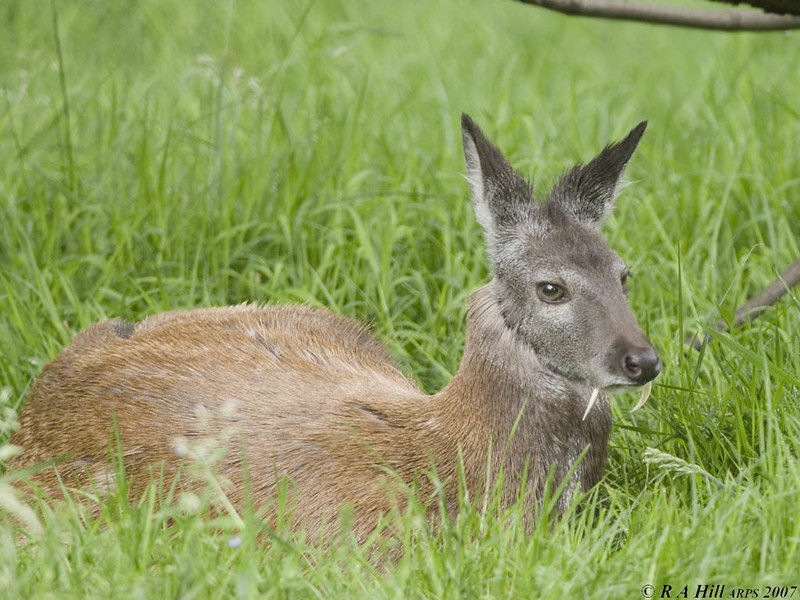
Despite the chilling name, vampire deer aren’t bloodthirsty beasts sneaking through the night. They’re entirely herbivorous and eat a plant-based diet made up of leaves, grasses, and shrubs. Their nickname comes from the males’ downward-pointing canine teeth, which can look alarmingly like fangs. But unlike Dracula, these deer are shy, solitary, and skittish — not exactly the life of the undead party. The fangs are used for posturing, not puncturing. So while they might look like they belong in a horror movie, vampire deer are more “vegan forest goth” than “Twilight villain.”
2. They Belong to a Real Group Called Musk Deer
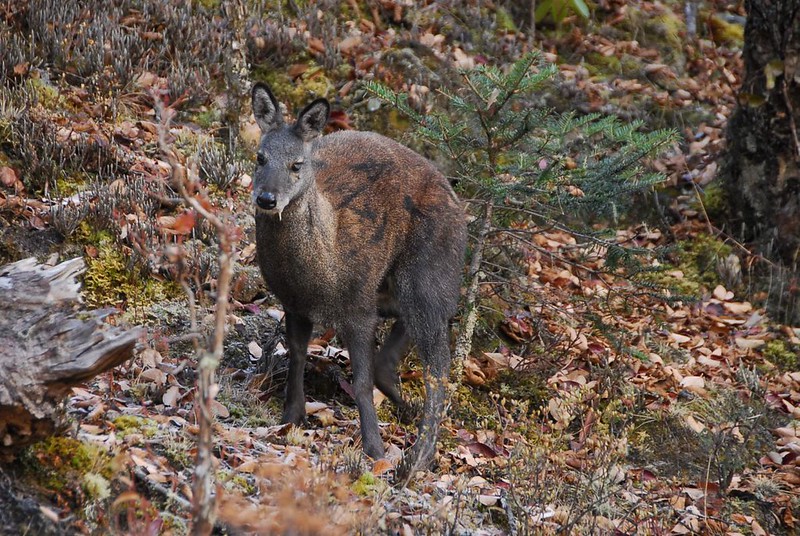
Vampire deer are a member of the musk deer family, which includes seven different species spread across Asia. Unlike your typical white-tailed deer, musk deer don’t grow antlers — the males grow fangs instead, because nature is a big fan of plot twists. What makes them really unique is their musk gland, which produces a strong-smelling secretion used to attract mates (and, unfortunately, perfumers). Musk was once a highly sought-after luxury item in the fragrance industry, fetching more than gold by weight at times. This led to widespread poaching, and many musk deer species are now considered endangered. These days, synthetic musk is a common alternative — better for your conscience and the deer
3. Males Use Their Fangs to Impress the Ladies
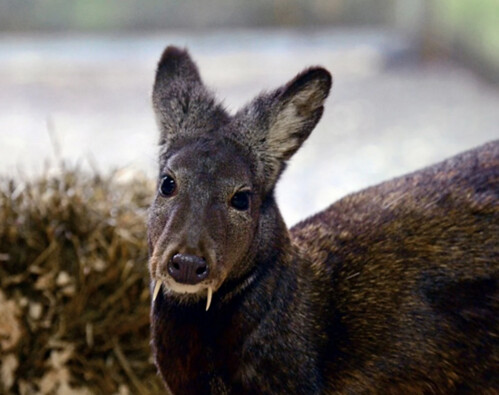
In the world of vampire deer, those fangs aren’t just there to look cool — they serve a clear mating purpose. Male musk deer use them to intimidate rivals and show off during the breeding season, often engaging in dramatic (but not typically deadly) toothy standoffs. Unlike antler battles, these encounters are more like awkward fang duels with lots of side-eye and slow-motion head bobbing. Bigger, longer fangs signal a stronger, more dominant male — which ups his chances with the ladies. Interestingly, the fangs don’t grow back if they break, so there’s a real risk to their toothy flex. It’s like living your whole life trying to flirt with only one perfectly waxed mustache.
4. They’re Actually Really Small and Kinda Cute

Despite the menacing teeth, vampire deer are adorably undersized. Most adults stand only about 20 to 28 inches tall and weigh between 15 to 40 pounds — picture a large house cat with saber teeth and anxious energy. They have soft, dense fur, big ears, and twitchy little noses that make them look more like plush toys than predators. Their size helps them navigate steep, rugged terrains, dart through thick underbrush, and hide from predators (and nosy humans). So while their nickname screams “horror movie,” their reality is much closer to “awkward forest introvert with anxiety and great cheekbones.” It’s like if Bambi got cast in a Tim Burton film.
5. They Live in Some of the World’s Most Remote Forests
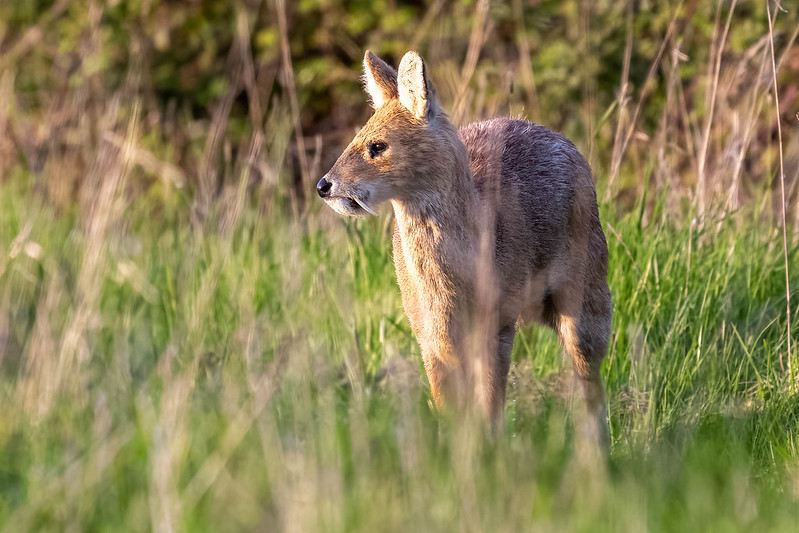
You won’t find vampire deer grazing in your backyard or frolicking through public parks. These elusive creatures stick to high-altitude forests and mountainous regions across Central and South Asia — from Siberia to the Himalayas and into Korea and China. Their preferred environments are dense, cold, and hard to access, which has helped them avoid a lot of attention over the years. In fact, they’re so shy and secretive that some species were thought to be extinct until researchers caught them on camera traps in the wild. Their elusive nature is part of what makes them so fascinating. They’re the cryptids of the cervid world — real, rare, and rarely seen.
6. There Are Multiple Species of Vampire Deer
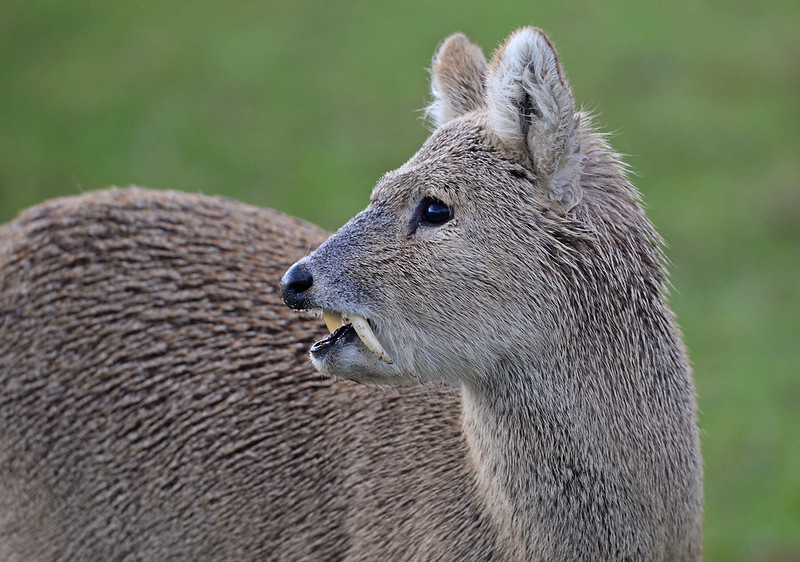
When people say “vampire deer,” they’re usually referring to several species of musk deer — and sometimes the Chinese water deer, too. These species include the Siberian musk deer, Kashmir musk deer, and Himalayan musk deer, among others. While they all share the signature tusks, their sizes, habitats, fur colors, and fang lengths can vary. Some prefer steep, rocky cliffs; others live near rivers or forests. The Chinese water deer doesn’t produce musk, but it has the most dramatic fangs of all, making it the true drama queen of the group. Basically, it’s like a vampire deer multiverse — each with its own weird powers and fashion choices.
7. Chinese Water Deer Take the Fang Game to Another Level

If vampire deer were competing in a beauty pageant for fang length, the Chinese water deer would take the crown — and probably stab someone with it. Males can grow tusks up to 3 inches long, curving slightly outward and looking downright cartoonish in person. These deer don’t produce musk like their Himalayan cousins, but what they lack in scent glands they make up for in attitude. They’ve been described as “pugnacious” and will square off with other males using fang-flashing head jerks and toothy jousts. Despite their intense appearance, they’re quiet and prefer solitude, often disappearing into reeds or forests at the first sign of trouble. Still, one glance and you’ll understand why they inspire both awe and confusion.
8. They’ve Made Cameos in the West — Sometimes at Zoos, Sometimes by Accident
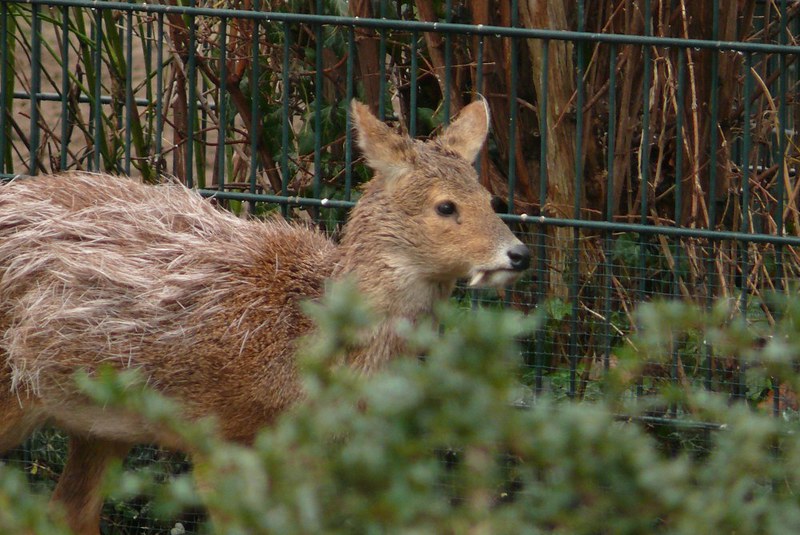
Chinese water deer were introduced to parts of the UK in the early 20th century after escaping from private estates and parks. Today, they’ve established wild populations in areas like Bedfordshire and Norfolk, occasionally surprising dog walkers and countryside strollers with their fang-forward faces. Some zoos in Europe and North America have musk deer species on display as part of conservation programs, but sightings are rare. For those unfamiliar with them, running into a vampire deer can cause a brief existential crisis: “Did I just see a fanged woodland creature or am I dehydrated?” To be fair, you probably saw a deer with dental drama. Either way, you’re not hallucinating — just having a weird wildlife moment.
9. They’re Classified as “Vulnerable” or “Endangered”

Despite their unique appeal, vampire deer are under serious threat in the wild. Overhunting for their musk glands, habitat destruction, and illegal wildlife trade have led to steep population declines in many areas. Some species, like the Himalayan musk deer, are listed as Endangered by the International Union for Conservation of Nature (IUCN). Their solitary, stealthy lifestyles make population monitoring difficult, which complicates conservation efforts. Thankfully, anti-poaching laws and the development of synthetic musk have helped reduce hunting pressure, but illegal trafficking still occurs. Without stronger protections, these bizarre little beauties could vanish before most people even realize they exist.


